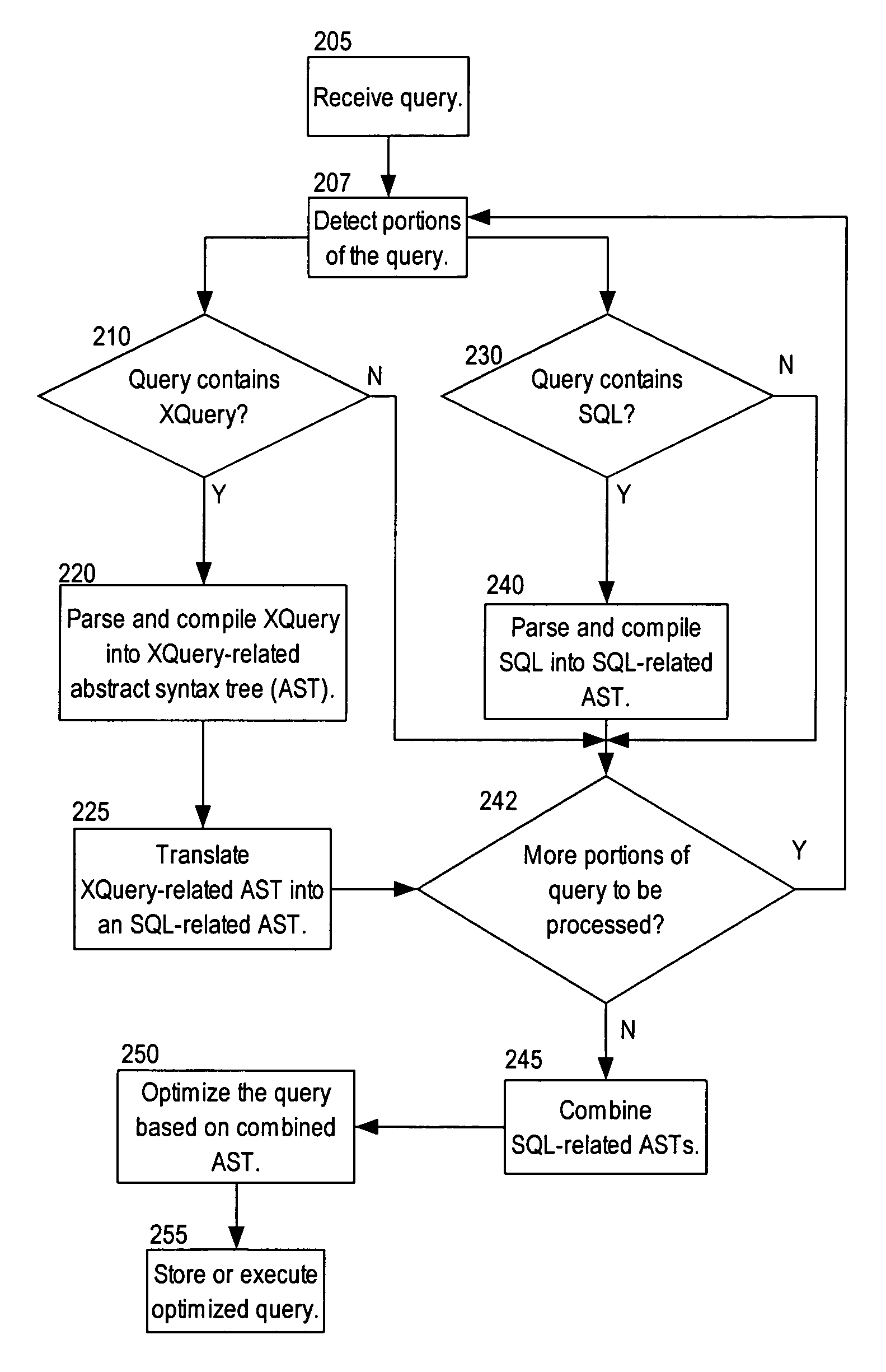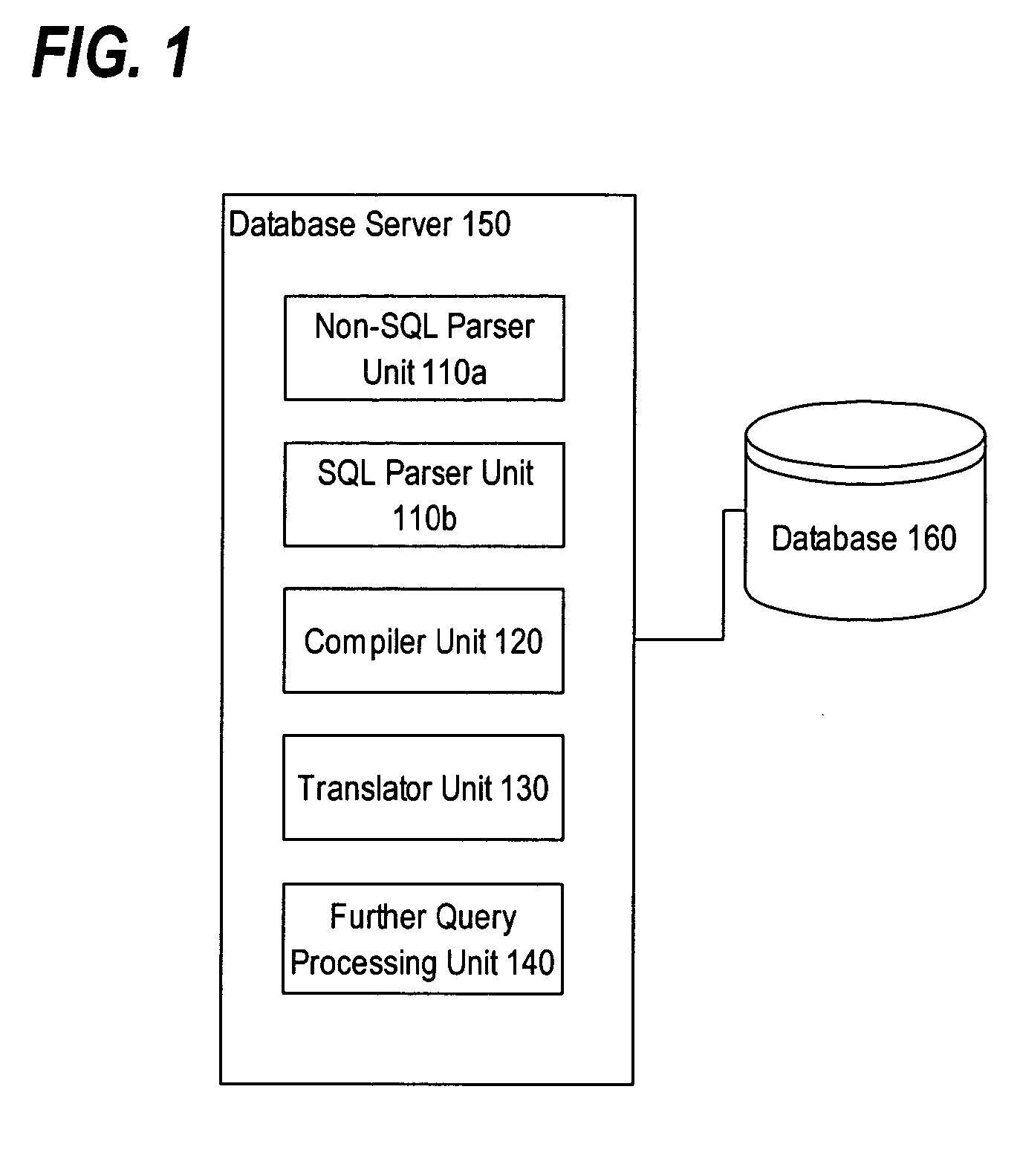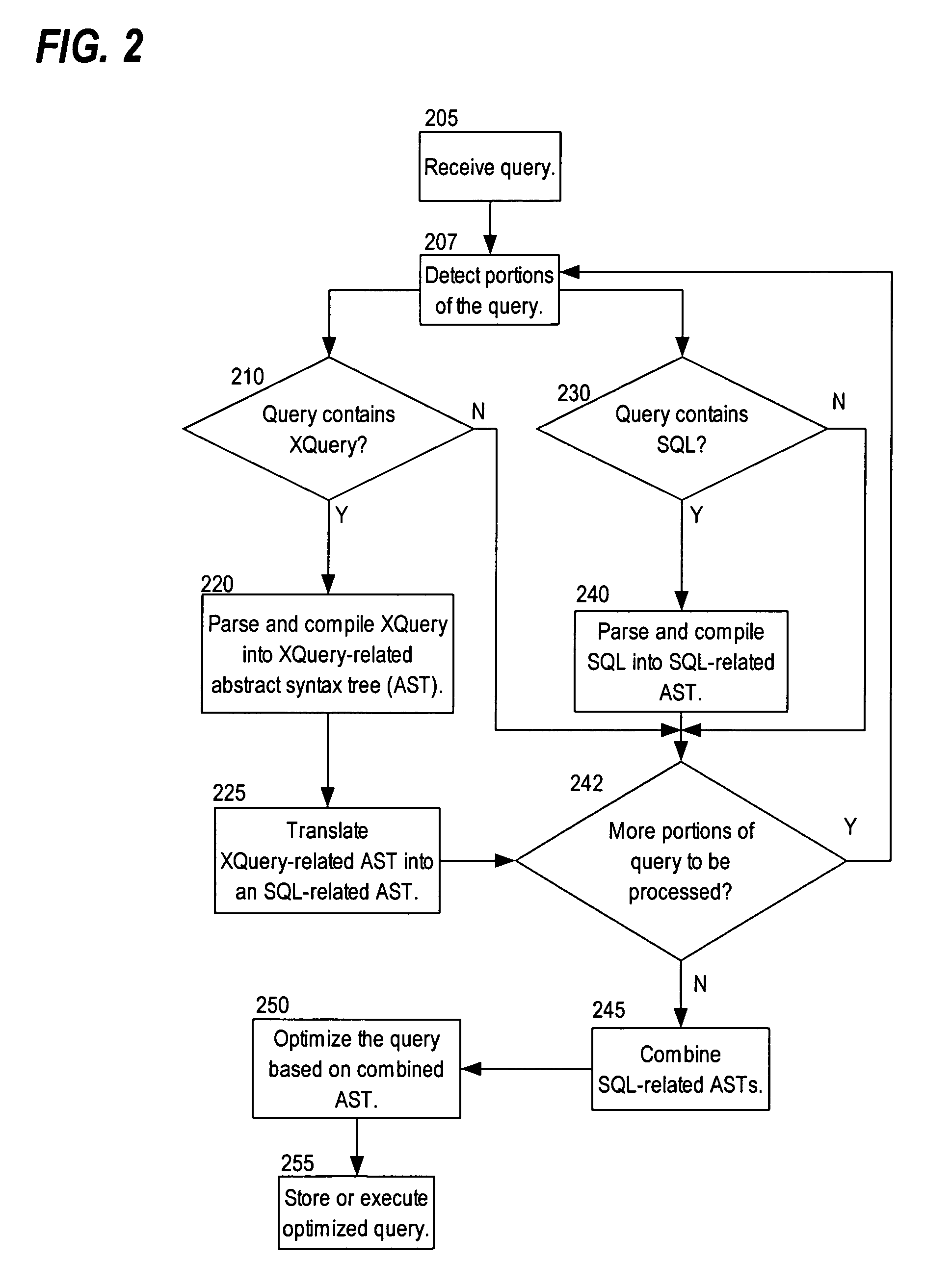Efficient evaluation of queries using translation
a query and efficient technology, applied in the field of query processing, can solve the problems of inefficient coprocessor approach, inability to understand the underlying techniques of storing xml data, and inability to implement the underlying techniques of xml data storag
- Summary
- Abstract
- Description
- Claims
- Application Information
AI Technical Summary
Benefits of technology
Problems solved by technology
Method used
Image
Examples
example 1
Simple FLWOR Clause
[0140]
for $i in (1,2,3) where $i > 1 return $i+ 2is mapped to select xmlagg(XMLCast(XMLCast(value(“$i”) as number) + 1 asxml)) from table(xmlsequence( xmlconcat ( cast (1 as xmltype(sequence)),cast (2 as xmltype(sequence)),cast (3 as xmltype(sequence))))returning sequence) as “$i” where XMLCast(value(“$i”) as number) > 1;
example 2
FLWOR Clause with XPath Expressions
[0141]
for $i in doc(“foo.xml”) / PurchaseOrder where $i / PoNo = 21 return {$i}becomes select xmlagg(XMLElement(“A”, value(“$i”))) from table(xmlsequence( extract ( select extract(Res,’ / Contents / *’) from resource_view where equals_path(res,’ / foo.xml’) = 1), ‘ / PurchaseOrder’))) “$i” where XMLCast( OPTXATG(value(“$i”, ‘ / PoNo’) as number) = 21
5.1.14.1. Let Clause Handling
[0142] A LET clause expression is inlined into the query expression (and marked as common subexpression) if node identities need not be preserved. Otherwise a subquery is created with the LET clause expressions as it's select list. The subquery is marked as non-mergeable to prevent view merging.
[0143] Example with node identities preserved:
for $i in doc(“foo.xml”) / PurchaseOrder / / LineItems let $j := doc(“baditems.xml”) / / BadItems where $i / ItemNo eq $j / ItemNo return ($i, $j / BadItem)becomes select xmlagg(xmlconcat(“$i”, OPTXATG(“$j”,’ / BadItem’))) from (s...
PUM
 Login to View More
Login to View More Abstract
Description
Claims
Application Information
 Login to View More
Login to View More - R&D
- Intellectual Property
- Life Sciences
- Materials
- Tech Scout
- Unparalleled Data Quality
- Higher Quality Content
- 60% Fewer Hallucinations
Browse by: Latest US Patents, China's latest patents, Technical Efficacy Thesaurus, Application Domain, Technology Topic, Popular Technical Reports.
© 2025 PatSnap. All rights reserved.Legal|Privacy policy|Modern Slavery Act Transparency Statement|Sitemap|About US| Contact US: help@patsnap.com



